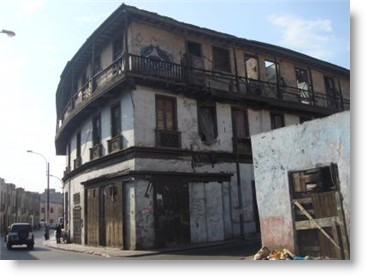
Over 1,000 houses in Lima’s historical center are in danger of collapsing in the event of an earthquake, according to the deputy manager of civil defense for the municipality, Alberto Marticorena.
The municipality checked the buildings, many of which have old structures and have not been properly maintained, following the 8.2 magnitude in earthquake last week in northern Chile, which caused some damage in that country and a tsunami alert along Peru’s coast.
Marticorena said the municipality has little authority to intervene in the 1,184 houses, many of which are located in the Barrios Altos neighborhood, because the buildings are private property. Authorities did, however, leave residents with information and technical recommendations to mitigate damage and injury in the case of a large earthquake. The buildings include some public properties, but the municipality is unable to intervene because they have been declared cultural heritage by the Culture Ministry and a series of bureucratic permits are required to make any structural adjustments.
The Rimac district also has a large number of colonial buildings in varying states of disrepair.
Legislation in Congress would give municipalities, if approved, more authority to intervene in those cases, Marticorena said.
Lima, a city of 9 million people, and the length of Peru’s coast are in an area highly prone area earthquakes. In 2007, some 200 people were killed when an 8.0 magnitude quake hit the region of Ica, located 300 km south of Lima.
The capital, which was the seat of the Spanish viceroyalty governing most of the continent during the colonial period, was devastated in 1746 by a strong earthquake and a subsequent tsunami that washed away the port city of Callao, leaving a mere 200 survivors in the port. That earthquake was the most damaging in Peru’s history.





